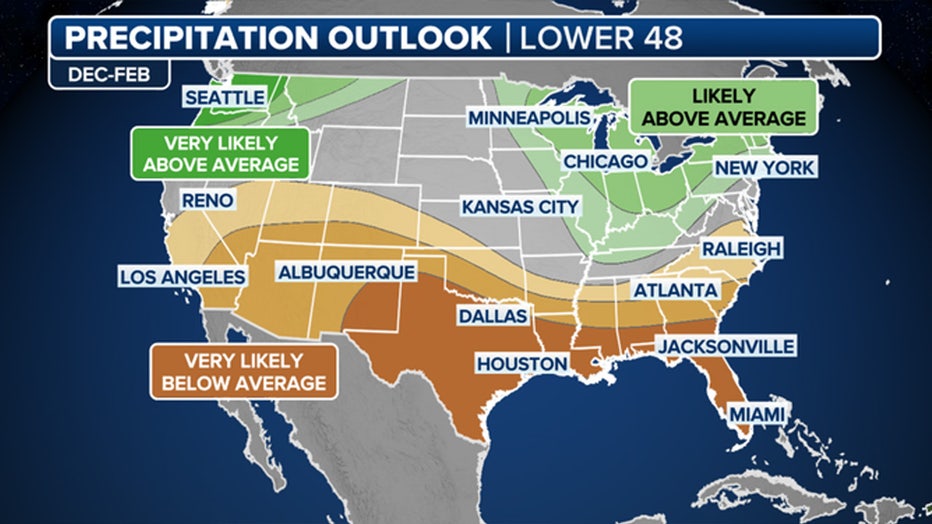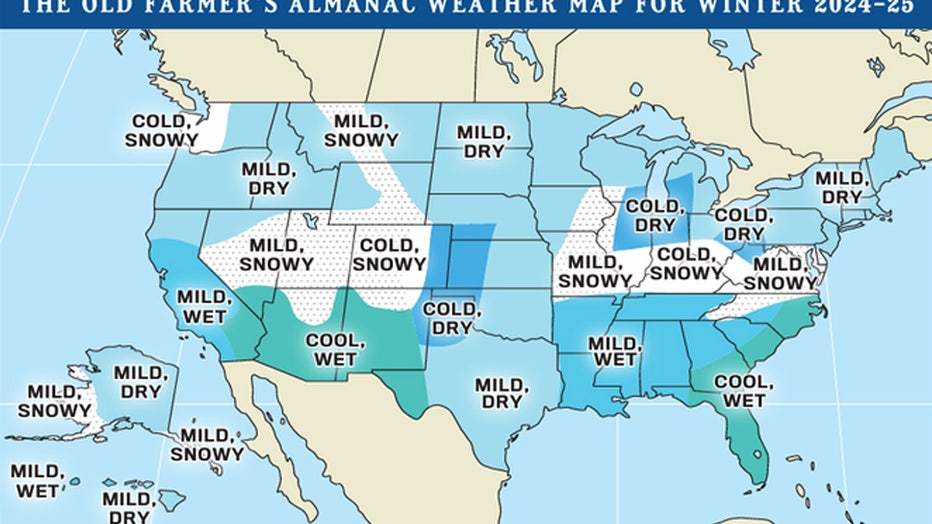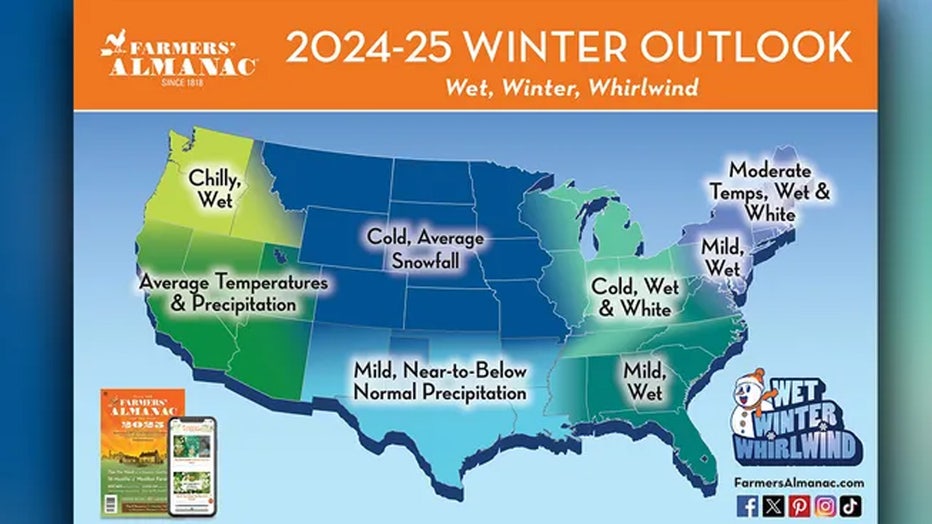New Yorkers slog through another winter storm
If you love snow, today’s weather was a bit of a letdown, but it’s still the most snow New York City has seen in years, and people made the most of it. FOX 5 NY’s Kendall Green went out to see how New Yorkers spent their snow day.
NEW YORK CITY – Are you ready for snow in NYC?
JUMP TO: NOAA l THE OLD FARMER’S ALMANAC l THE FARMERS’ ALMANAC
While the Big Apple saw measurable snow last year, it was still far off from what the region usually sees annually. So, how will this year look?
Here are winter outlooks from the NOAA, the Old Farmer’s Almanac and the Farmer’s Almanac.
The NOAA Climate Prediction Center’s updated winter outlook provides a glimpse of what Americans can expect from December through February. The forecast suggests a typical La Niña pattern.
The influence of La Niña is expected to dominate weather conditions from December through February, according to NOAA. This often translates to wetter conditions in the northern tier of the country.
La Niña is expected to influence the weather this winter. (FOX Weather)
NOAA predicts a 71% chance of La Niña emerging between September and November, with the cooling trend potentially persisting through January-March 2025. While a moderate to strong La Niña is less likely during the fall and winter, there’s still a possibility.
By the February-April 2025 season, El Niño-Southern Oscillation (ESNO)-neutral conditions are expected to return.
What does this mean?

The northwestern U.S., Great Lakes, Northeast and Alaska are likely to see more precipitation than average this winter. (FOX Weather)
According to NOAA, the Northeast is most likely to see above-average precipitation this winter.
The Old Farmer’s Almanac, which was established in 1792 in New Hampshire, says its centuries-old formula for predicting the winter uses a mix of solar science and the study of sunspots, climatology and meteorology.
“This winter, temperatures will be up and snowfall down throughout most of the United States,” Carol Connare, the Old Farmer’s Almanac’s editor-in-chief, wrote in a news release announcing its winter prognostication. “While there will still be plenty of chilly temperatures and snow for most slopes, the high heating costs associated with the season shouldn’t hit so hard. We’re predicting a temperate, uneventful winter – potentially a welcome reprieve from the extremes of recent years.”

The Old Farmer’s Almanac Winter Outlook for 2024-25. (The Old Farmer’s Almanac)
It’s especially true in the interior Northeast, where it predicts a “gentler-than-normal season” that’s “not so rough and tough.”
For the Interstate 95 corridor, which includes the Tri-State area, snowfall is predicted to be below average in the North but above average in the South, with the coldest temperatures in early and late January and late February.
Meanwhile, The Farmers’ Almanac, which was established in 1818 in Maine, says, to “brace yourself for a Wet Winter Whirlwind!” Their annual extended weather prediction calls for a season of rapid-fire storms that will bring both rain and snow.

The listing shows a very active storm track that will deliver frequent bouts of heavy precipitation and strong and gusty winds over most of the eastern half of the country. However, the outlook notes that the effects of La Niña will make a difference in how the weather will be.
Forecast: Where will it snow in NYC?
According to their outlook, the Northeast will be stormy with above-normal amounts of winter precipitation and near-to-above-normal temperatures.
“The coldest outbreak of the season will come during the final week of January into the beginning of February, when frigid Arctic air brings a sharp plunge in temperatures almost nationwide,” the Farmers’ Almanac wrote.
They also predict the heaviest snowfall will fall over the interior and mountainous areas, while the coast will see sleet and rain – especially near and along the I-95 corridor.
2024-2025 winter predictions: Dates to remember
The almanac is “red flagging” the final week of January due to a very active storm track across most of the country’s eastern half.

Here’s a look at the Farmers’ Almanac winter 2025 extended weather forecast. (FOX Weather)
If you are a planner, block out Jan. 20 through Jan. 27, particularly for that tropical getaway. That’s when the Farmers’ Almanac outlook likely showed “copious amounts of snow, rain, sleet and ice” depending on where you live.
“We would especially highlight the time frames from January 20 to 23 and 24 to 27, which could mean copious amounts of snow, rain, sleet, and ice (depending on where you live),” the Farmers’ Almanac said.

